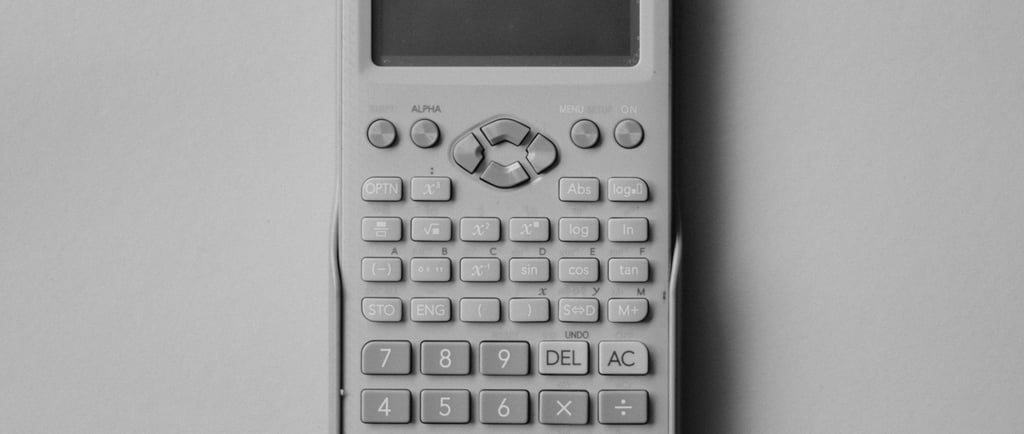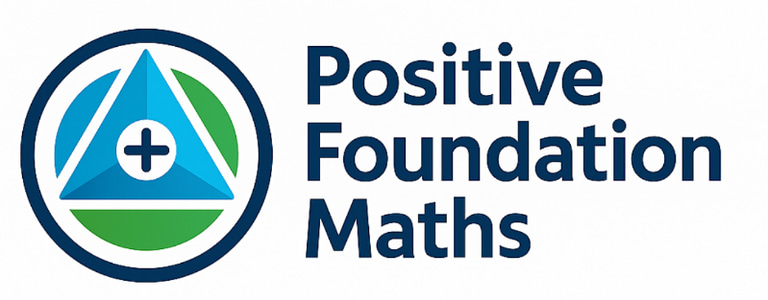Calculators, provoking the desire to do maths, but taking away the performance?
Making appropriate adjustments in KS4 Maths teaching of low prior-attaining students truly changes life chances, as most post 16 courses require at least a Grade 4 Maths GCSE to progress. Calculators really can enhance performance and understanding of mathematics and need to be embraced.
Jane Hardy
4/7/20254 min read


Calculators, provoking the desire to do maths, but taking away the performance?
The ‘chimp’ effect on mental maths
I am a longstanding Year 7 to 13 Maths Teacher and yet have never had immediate recall of all key times tables. Stress triggers in the classroom from SLT lesson observations, or silent or not-so-silent criticism from students can trigger my ‘Chimp’, releasing stress hormones cortisol and noradrenaline, making me doubt key memorised facts, until I calm and regain sufficient ‘Human’ attributes to rationalise the situation that allow me to access my ‘Computer’.
This parallels the experience of low prior attaining students, the only difference being that I bumbled along in the second set at school with supportive parents who had time and money for me to develop and practise calming strategies, un-blocking my sometimes uncooperative synapses, enabling me to process mathematical thought. ‘Bottom-set’ students, for a whole host of other complex reasons, find it much harder to calm their ‘Chimps’ down and get maths done, but in essence calming strategies, routines and tools such as calculators are massively helpful (Peters 2011).
How calculators can help low prior attaining KS4 students
Regardless of the reason for low prior-attaining, students find re-learning foundation mathematics topics very stressful. Many students find the repetition of primary school maths work boring and pointless. Primary worksheets used in a secondary maths setting are often not emotionally appropriate; students’ maths may not have moved on, but their social and emotional lives have. The Positive Foundation Maths Project allows students to catch-up and gain confidence with mathematical learning by providing suitable structure and repetition.
Surprisingly calculator use in 80% of lessons will enable improved performance in non-calculator tests because students have a chance to spend more energy, in class, learning topics that can make overall mathematical reasoning more efficient and easily accessible, particularly in a stressful examination situation.
Why teach lower prior attainment foundation classes differently
When all Foundation classes follow one scheme of work, typically the higher prior attaining sets have greater long-term retention of key topics because every single lesson they can practise more questions, due to their lighter cognitive load from knowing multiples by heart. In this way, every single lesson they compound the distance between themselves and the lowest attaining set. By Year 7 the distance is substantial, by Year 11 it can feel impossible for the ‘bottom’ set students to catch up.
‘Govian’ educational reforms (2010 to 2014) shaped mathematical education by removing calculator usage from most primary learning (Ofsted 2011, Boorman 2015). This has had a knock-on-effect on the perceptions of students and teaching staff in secondary schooling. We have found at the Positive Foundation Maths Project, saving one day a week for non-calculator practice is the most effective method of reducing stress, connecting ‘times tables’ to actual topics on the Foundation GCSE examination and improved performance in all three GCSE papers regardless of calculator use.
Crowding out effects
Constant insistence on ‘mental-maths’ strategies in lessons, not only knocks out time spent on acquiring skills on mathematical topics, it also crowds out effective practice on calculators. Calculators at GCSE are more complex apparatus than those used even five years ago, and students who do not use all of the functions effectively in the examination are at a substantial disadvantage, compared to those who do. Students in low prior-attaining maths sets often have difficulty with organising their equipment, which means that they often do not have a suitable calculator for homework (if completed).
Budgetary constraints
Due to the myriad of, some subtly, some not so, different calculators on the market, very often students in class also never have use of a consistent type of calculator. For maths departments on limited budgets this is a constant headache, and particularly around science and maths mocks and exams; unsurprisingly class-sets get very depleted, even under the supervision of the most organised and hyper-vigilant teacher.
It is, however, worth constantly vying for good scientific calculator resources as improved understanding of fractions, decimals, percentages and ratios can be achieved with good calculator skills. Proportion makes approximately 40% of the GCSE topics and ALL students will be more successful in their current and future lives with better proportional understanding. The pain is worth the effort in the maths classroom.
Unconscious bias?
In the seventies and eighties students only had calculators in exams from ‘A’ level studies. For many adults: teachers; parents; tutors and teaching assistants, this has unconsciously embedded insidious thoughts that non-calculator maths is a superior entity, even if the adults were not born at this time! Overemphasis of the importance of learning multiples is particularly peddled by academically successful educators, politicians and guardians. The reality is that calculators are auto-loaded on all phones and laptops and two thirds of their GCSE and all of A level Maths is calculator based.
The persistence of belief, that all mental methods are the superior method of calculating, has to be broken for success at GCSE for lowest prior-attaining students. Mathematical success does not lie in the continuation of using primary mental maths strategies in every single lesson, when it has not succeeded in Years 1 to 8. This does not mean that the concerted effort in primary school to learn multiples has been wasted, as retention can be regained and improved upon once confidence and stress levels have been reduced for KS4 students. Emotionally appropriate, once-a-week, non-calculator exercises for KS4 students, as 10 minute starters and plenaries will be available on the Positive Foundation Maths website shortly.
Conclusion
Of course there is a natural beauty of being able to process complex calculations with just pen and paper, but not everyone has the emotional capacity for it, when they need to jump the GCSE fence to post 16 courses and apprenticeships. Making appropriate adjustments in KS4 Maths teaching of low prior-attaining students truly changes life chances, as most courses require at least a Grade 4 Maths GCSE to progress. Calculators really can enhance performance and understanding of mathematics and need to be embraced.
Jane Hardy
7 April 2025
References
Boorman, D. (2015) Should primary school children be “calculator aware” or “calculator beware”?, TEAN Journal, 7(1), Teacher Education Advancement Network Journal Copyright © 2015University of CumbriaVol 7(1) pages 74-86 (Accessed 7 April 2025)
Ofsted, (2011) Good practice in primary mathematics: evidence from 20 successful schools, Reference 110140 age group 3-11 (Accessed 7 April 2025)
Peters, S., (2011) The Chimp Paradox. The Acclaimed Mind Management Programme to Help You Achieve Success, Confidence and Happiness, Vermilion, ISBN 9781448117983
Shakespear, W., Macbeth, Act 2, Scene 3: ‘Drink, sir, is a great provoker of three things . . . nose-painting, sleep, and urine. Lechery, sir, it provokes, and unprovokes; it provokes the desire, but it takes away the performance.’
